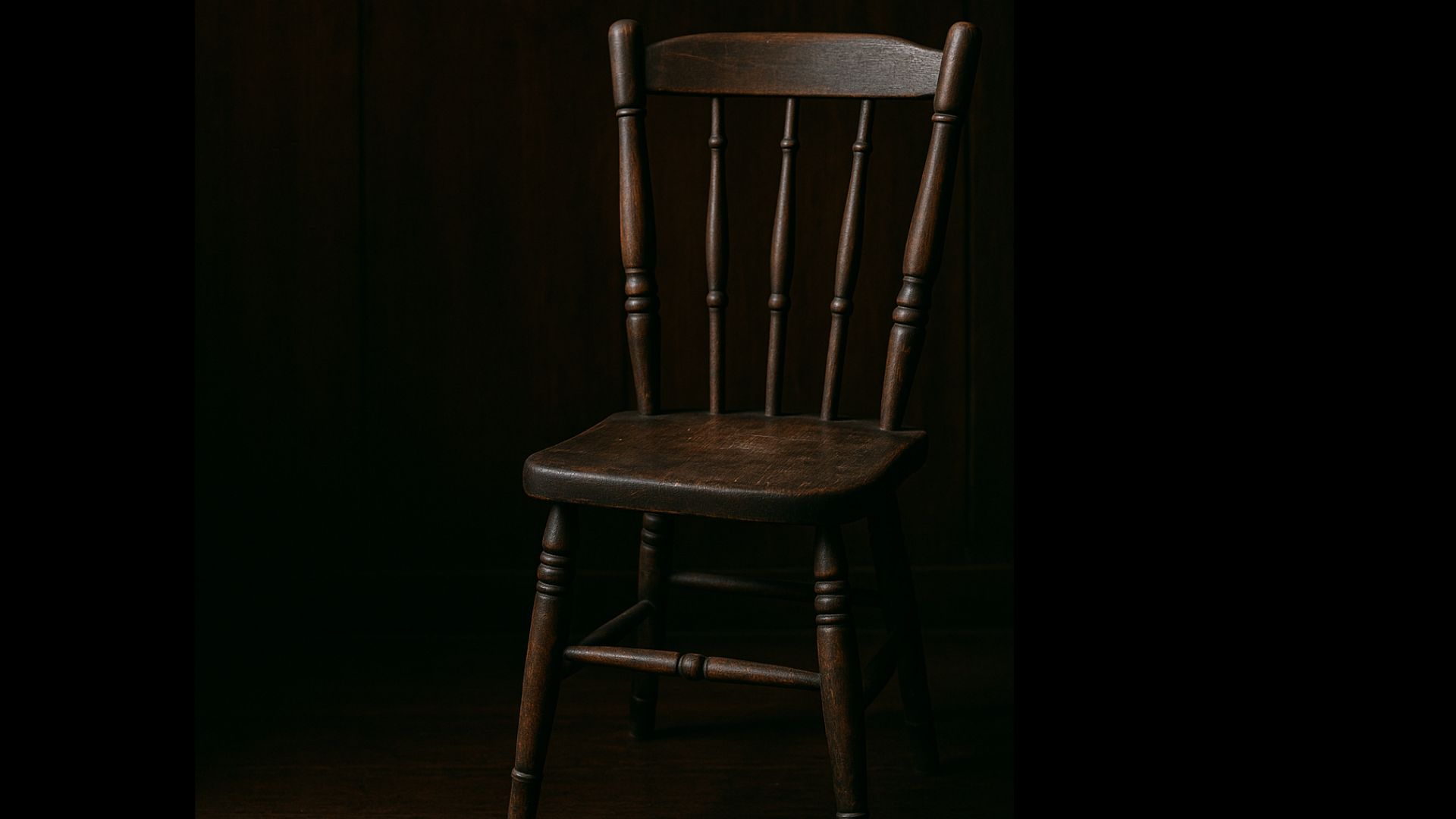🪑 The Cursed Chair of Thomas Busby – The Death Chair That Still Kills
The Cursed Chair of Thomas Busby isn’t just a spooky folktale—it’s a dark legend with a death count. Hidden in a quiet museum in Thirsk, England, this old wooden chair has been blamed for mysterious deaths spanning centuries. But what makes this chair so feared that it had to be hung from the ceiling?
Let’s explore the terrifying true story behind one of the most haunted objects in the world.
Who Was Thomas Busby?
Thomas Busby was a known drunkard, criminal, and counterfeiter in 18th-century North Yorkshire. He ran a shady coin-forging business with his father-in-law, Daniel Auty, who lived with him at the now-infamous Busby Stoop Inn.
In 1702, after a violent argument over their illegal dealings—or perhaps because Auty dared sit in Busby’s favorite chair—Busby murdered him. He was arrested, tried, and sentenced to death by hanging.
There are two popular versions of the curse’s origin:
- Busby was dragged from the chair during arrest, shouting that anyone who sat in it would die.
- Or, before his execution, he cursed the chair while on his way to the gallows.
Either way, the legend began—and so did the body count.
Where Is The Cursed Chair of Thomas Busby Now?
Originally located at the Busby Stoop Inn, near the village of Thirsk, the chair was an ordinary-looking oak chair that sat quietly by the fireplace. That is, until visitors began dying mysteriously after sitting in it.
In 1978, after decades of eerie deaths, the pub’s landlord couldn’t take it anymore. He donated the chair to Thirsk Museum, where it now hangs on the wall—literally—so no one can ever sit in it again.
🧾 The Chilling Deaths Linked to the Chair
The list of deaths is long, mysterious, and terrifying. Most of them share one thing in common: the victims sat in Busby’s cursed chair shortly before dying.
- During World War II, Canadian airmen from a nearby RAF base frequented the pub. Locals say those who sat in the chair never returned from bombing missions over Europe.
- A roofer fell to his death just hours after sitting in the chair during lunch.
- A cleaning woman accidentally brushed against it and died in a car crash.
- A group of delivery men dared each other to sit—and one later died in a freak accident.
So many incidents were reported that even maintenance staff refused to touch it.
🧪 Expert Examination: A Strange Twist
In an attempt to uncover the truth, a furniture historian examined the chair. Surprisingly, he concluded that the chair wasn’t made until around 1840—more than a century after Busby’s death in 1702. The spindles were machine-turned, unlike 18th-century craftsmanship.
This raised a strange question:
Is the curse real—or did it transfer from an older, original chair to this newer one?
Or perhaps, belief alone is enough to make the curse deadly.
A Haunting at the Crossroads
Busby’s execution took place at Sandhutton Crossroads, now a roundabout opposite the Busby Stoop Inn. According to local legend, Busby’s ghost still haunts the spot, and many travelers have reported cold spots, apparitions, and shadows around the area.
Locals even believed that his spirit clung to the chair, seeking revenge on anyone who dared disrespect his final resting place—or his seat of power.
Must Read: A Village Where Everyone Lives with Mummies
Pop Culture & Paranormal Fame
The story of The Cursed Chair of Thomas Busby has gone far beyond North Yorkshire:
- It was featured on Unsolved Mysteries and Beyond Belief: Fact or Fiction.
- In the Japanese webcomic Hetalia: Axis Powers, Busby’s Chair is portrayed as a deadly object that drags souls to hell.
- Paranormal researchers and ghost hunters regularly include the chair in lists of the most haunted objects in history.
Despite skepticism, the legend endures.
Busby’s Legacy: A Lesson in Belief and Fear
The cursed chair reminds us how belief and fear can turn even the most ordinary objects into symbols of death. Whether you see it as myth, warning, or haunted relic, The Cursed Chair of Thomas Busby continues to chill visitors to this day.
And remember: it’s no longer just folklore—it’s a museum exhibit… hanging out of reach.
Would you dare sit in it?







